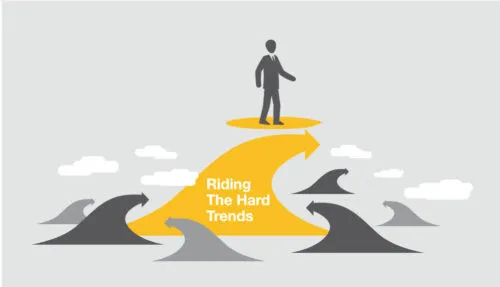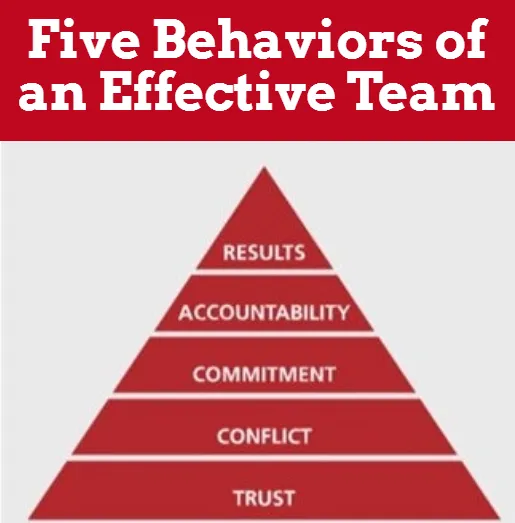The Complexities of Leadership
In This Issue
- The Complexities of Leadership by Daniel Burrus (Guest Contributor)
- The 8 Pillars of Trust by David Horsager
- The Five Behaviors Difference (Team Development Based on Trust)
The Complexities of Leadership Broken Down into Eight Attributes by Daniel Burrus, Author of The Anticipatory Organization
In his book, “Trusted Leader: 8 Pillars That Drive Results,” David Horsager shares eight key qualities that successful companies possess to cultivate trust among employees and customers.
Trust is defined as “the assured reliance on the character, ability, strength, or truth of someone or something.” We strive to trust others in our personal lives every day, trusting a partner, friend, or family member. We trust them to tell us the truth even when it hurts. We trust them to communicate and be compassionate, but also truthful and to stick to what they believe in.

The 8 Pillars of Trust and Being an Anticipatory Leader
1. Clarity
Simplicity and exactness are vital keys to developing institutional trust.
2. Compassion
Compassion means that the organization or leader was compassionate toward the industry and organization as a whole, fostering a sense of unity in teamwork.
3. Character
The pillar of character means that we trust those who do what is right over what is easy.
4. Competency
Having character does not mean your business or organization is necessarily competent. David gives an example: If you are trying to sell me an electric motorcycle when your cornerstone has always been gas motorcycles, I will not immediately trust that you are competent enough to produce a safe and efficient electric motorcycle.
5. Commitment
Employees and customers trust those that have a solid commitment to their industry. If you are constantly choosing new directions, many will see it as a shaky foundation or lack of leadership.
6. Connection
Whether it is work, play, or for personal reasons, we rely heavily on social connections and interactions when looking to trust individuals or organizations.
7. Contribution
This is where the rubber meets the road, and you deliver on your promises of excellence to customers and employees alike.
8. Consistency
Trustworthiness is strengthened by consistency. Similar to staying committed to a goal, trust is broken when consistency at a business or organization wavers.
Click on the following link to access the full article by Daniel Burrus.
About Daniel Burrus
Daniel Burrus is considered one of the World’s Leading Futurists on Global Trends and Disruptive Innovation. The New York Times has referred to him as one of the top three business gurus in the highest demand as a speaker. Click the link below to explore Daniel’s Anticipatory Leader System to see how David’s great insights align with his Hard Trend Methodology, teachings in exponential thinking, and more.

Learn More
Click Here to Explore the Anticipatory Leader System
Click Here to Access David Horsager’s book Trusted Leader: 8 Pillars That Drive Results

The Five Behaviors Difference
The Five Behaviors is based on New York Times best-selling author Patrick Lencioni’s ground-breaking model for developing cohesive teams through five key behaviors:
Trust, Conflict, Commitment, Accountability, and Results. With more than 3.2 million copies in print, The Five Dysfunctions of a Team is a cornerstone methodology for teamwork and organizational development. Want to take your teams to the next level? Click the Link Below.
Click Here to Learn about The Five Behaviors Team Development Process
